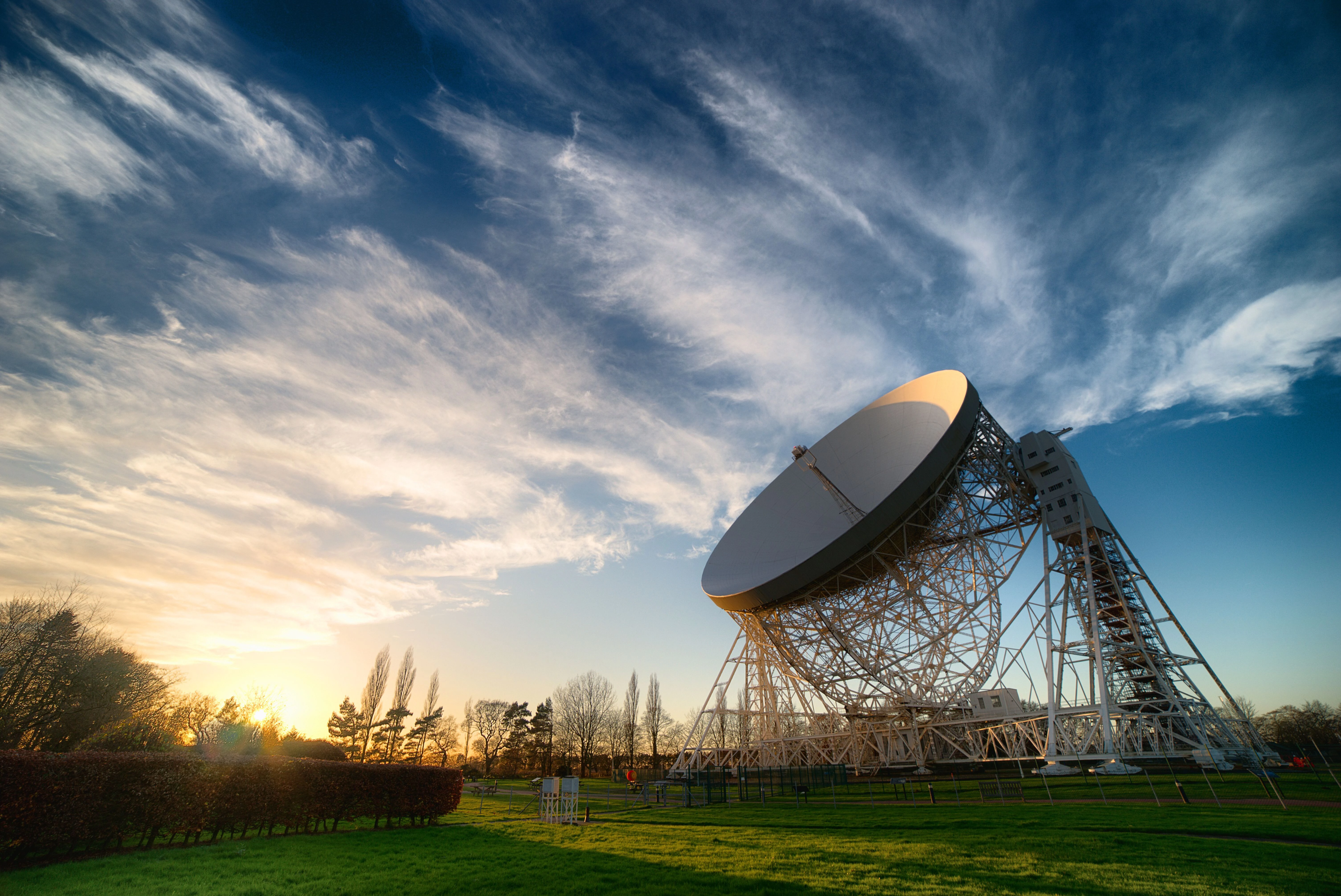
Member Article
The Lovell Telescope at Jodrell Bank in Top 200 world shaping projects
The Institution of Civil Engineers (ICE) has announced that the Lovell Telescope at Jodrell Bank is one of its top 200 influential people and projects that illustrate how civil engineering shapes the world and helps transforms people’s lives.
To mark the ICE’s 200th anniversary, and to support Government’s Year of Engineering, the Institution is highlighting 200 inspirational and world-changing projects from around the world throughout 2018. Nominated by the ICE’s members and selected by an expert panel, the chosen projects illustrate the breadth and depth of civil engineering’s impact.
The pioneering Lovell telescope has played a key role in transforming our knowledge of the universe, from the discovery of quasars and the investigation of pulsars and the principle of the warping of space.
When completed in 1957, at a cost of £750,000, it weighed in at 3,200 tonnes and was the world’s largest steerable dish radio, capable of pointing at any part of the sky. The telescope was so heavy it required gun turret motors from World War Two battleships HMS Revenge and HMS Royal Sovereign to power its tilting mechanism.
Originally known as the Mark 1 telescope, its first vital contribution was to track the Soviet Sputnik 1 satellite.
The enormity of the engineering project, spearheaded by Sir Bernard Lovell, is reflected by the fact that six decades on, it remains the planet’s third largest steerable telescope and an iconic feature of the Cheshire landscape.
The telescope has also entered popular culture with television appearances including Dr Who, The Hitchhikers Guide to the Galaxy and Coronation Street. It has featured in music videos for D: Ream, Placebo, Public Service Broadcasting and The Electric Light Orchestra.
Emma Antrobus, Director of ICE North West, said: “The Lovell Telescope is an outstanding example of British ingenuity and innovation and a brilliant feat of engineering. It is a shining example of how important civil engineering is, and how it transforms people’s lives.
“We know that many adults and young people don’t know what a civil engineer does and can’t identify a single UK civil engineering project. We are challenging this and aim to change these perceptions by showcasing projects such as this.”
Mike Garrett, Director of the Jodrell Bank Centre for Astrophysics and Sir Bernard Lovell Chair of Astrophysics at The University of Manchester, said: “The Lovell Telescope is one of the UK’s most iconic and best recognised scientific landmarks.
“The telescope is currently undergoing a major structural upgrade which will ensure that it remains at the forefront of fundamental research for many years to come.”
It continues to make an important contribution to future astronomical research, forming part of the UK’s e-MERLIN and European VLBI Network arrays – a network of stations combining to form one powerful telescope. It also monitors electromagnetic radiation for signs of extra-terrestrial life.
The Lovell Telescope joins the 200 projects which will be published throughout the year on the What Is Civil Engineering? pages of the ICE website alongside career guidance This platform has been designed to help promote the career of civil engineering after it was revealed that only 45% of adults know what the career entails and only 35% of young people could tell you what a civil engineer does.
This was posted in Bdaily's Members' News section by Andrew Douglas .




 test article 123456789
test article 123456789
 hmcmh89cg45mh98-cg45hm89-
hmcmh89cg45mh98-cg45hm89-
 test456456456456456456
test456456456456456456
 test123123123123123123
test123123123123123123
 test xxxdiosphfjpodskhfiuodsh
test xxxdiosphfjpodskhfiuodsh
 Savour the flavour: North Tyneside Restaurant Week returns for 2024
Savour the flavour: North Tyneside Restaurant Week returns for 2024
 Six steps to finding the right buyer for your business
Six steps to finding the right buyer for your business
 Stephen signs off on a special night
Stephen signs off on a special night
 Life’s a Peachaus: Gillian Ridley Whittle
Life’s a Peachaus: Gillian Ridley Whittle
 Making a splash: Phil Groom
Making a splash: Phil Groom
 Making workplace wellbeing a priority
Making workplace wellbeing a priority
 A record of delivery, a promise of more: Ben Houchen
A record of delivery, a promise of more: Ben Houchen